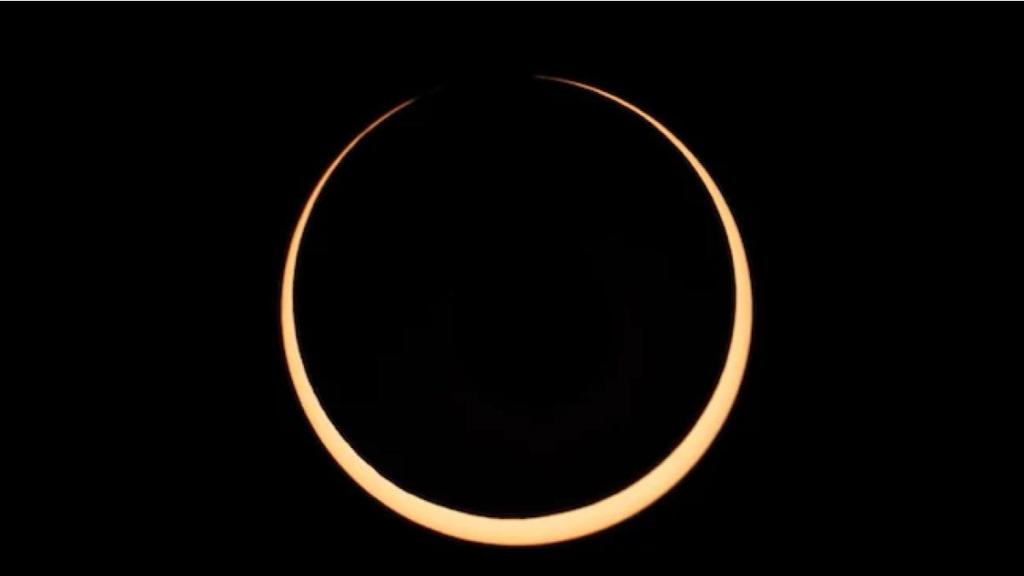Solar Eclipse 2024: A “ring of fire” solar eclipse occurs when the Moon passes directly in front of the Sun but appears smaller, creating a striking ring effect.
Astronomy enthusiasts around the world are eagerly anticipating the annular solar eclipse on October 2, 2024. This remarkable celestial phenomenon, commonly referred to as the “Ring of Fire,” will unfold over more than six hours, beginning at 9:13 PM IST and concluding at 3:17 PM IST the following day.
During this event, the Moon will align perfectly in front of the Sun. However, due to its distance from Earth, it will appear smaller than the Sun, resulting in a stunning visual effect where a bright ring of sunlight remains visible around the darkened centre, captivating viewers along the path of annularity.
The annular solar eclipse will be visible from select locations across the Pacific Ocean, southern Chile, and southern Argentina. Unfortunately, skywatchers in India will be disappointed, as the eclipse will occur at night and will not be observable from the country.
Safety Precautions
For those fortunate enough to be within the viewing path, experts emphasise the importance of safety precautions when observing the eclipse. Special solar viewing glasses are essential to prevent serious eye damage while enjoying this spectacular event.
What to Expect
A “ring of fire” solar eclipse occurs when the Moon passes directly in front of the Sun but appears smaller, creating a striking ring effect. According to NASA, this phenomenon is made possible by the Moon’s elliptical orbit, which causes it to be both farthest (apogee) and closest (perigee) to Earth at different times.
Solar eclipses happen when the Sun, Moon, and Earth align, casting a shadow on Earth that either fully or partially blocks the Sun’s light. This alignment occurs during eclipse seasons, which happen twice a year.
For observers in India, the traditional Sutak Kaal period, observed during eclipses, will not apply this time, as the eclipse will not be visible in the region.









